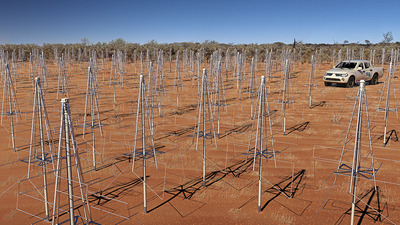$26m for radioastronomy in WA
The International Centre for Radio Astronomy Research (ICRAR), based in Perth, has been given an extra $26m investment by the Western Australian government, which will boost the centre’s funding until 2019.
ICRAR - a joint venture between Curtin University and The University of Western Australia - was launched in 2009 with initial funding for five years from the WA government and joint venture partners. It is considered one of the top 10 radioastronomy centres in the world and is one of Australia’s largest training centres for graduate students in astronomical science and technology.
ICRAR played an important role in attracting part of the world’s biggest telescope, the Square Kilometre Array (SKA), to WA. The new funding ensures the state’s continued capability for Square Kilometre Array science and builds on government support for radio astronomy and related sciences. Earlier this year, ICRAR was also successful in receiving almost $5m as part of a $19m federal government funding package for SKA preparatory work.
Already, opportunities for local industry of over $4.8m have been created to date; this kind of industry engagement and innovation were one of three priorities for the new state funding.

The Murchison Widefield Array, the first SKA precursor telescope to complete construction and commence science operations, is one of the major radioastronomy projects building Western Australian capacity in radioastronomy, engineering and information and communications technology.
ICRAR intends to be involved in pre-construction work for the SKA in both the engineering and design of the WA-based, low-frequency antennas and the telescope’s powerful computing backend - work that can now be initiated due to this funding extension.
The centre’s planned involvement in the pre-construction period of the Square Kilometre Array (2013-2016) includes: verification systems for the two-million-antenna low-frequency portion of the SKA (SKA-low) that will be based in WA; involvement in the design of the SKA’s correlator - the part of the telescope that combines signals from the individual antennas; and design of the ambitious SKA computing system.
Rohde & Schwarz opens Auckland office
Rohde & Schwarz Australia has launched a new office in New Zealand, expanding its presence...
Comms Connect NZ heads to Wellington in 2026
The 2026 edition of Comms Connect New Zealand will take place in the new Takina Convention and...
Leonardo commits to mission-critical comms with ARCIA membership
Leonardo brings decades of global expertise in secure communications, cyber-resilience, emergency...




